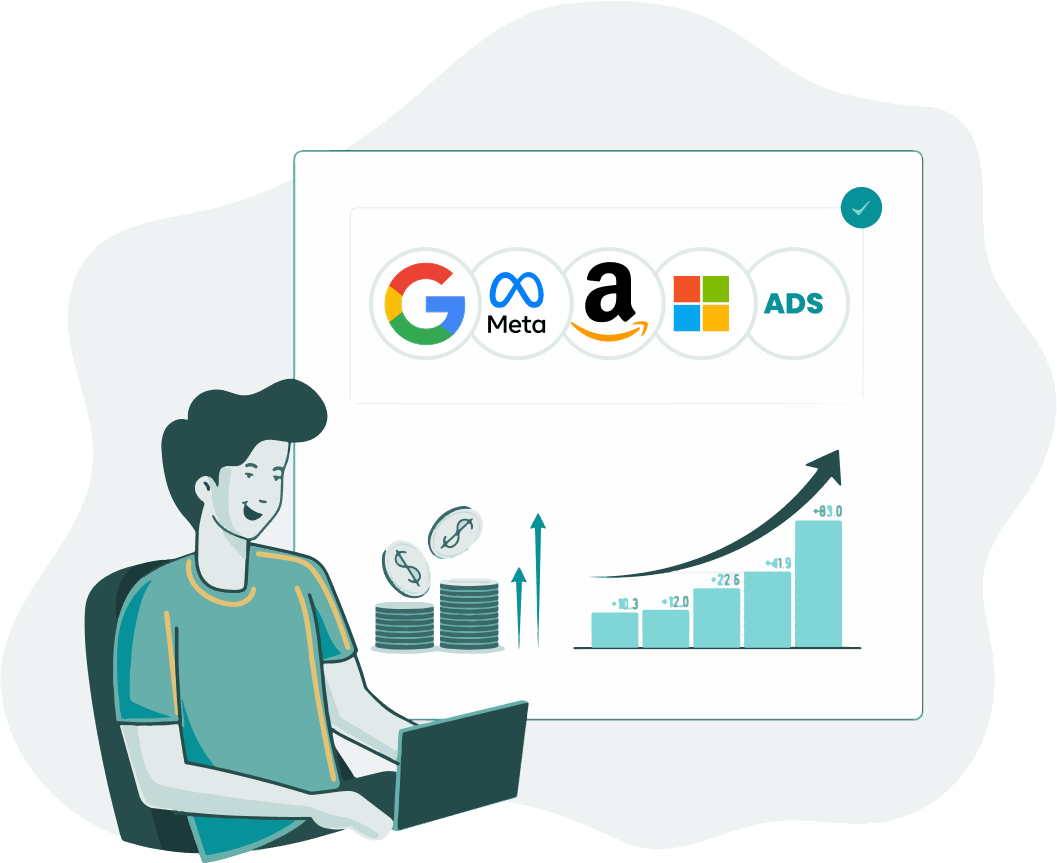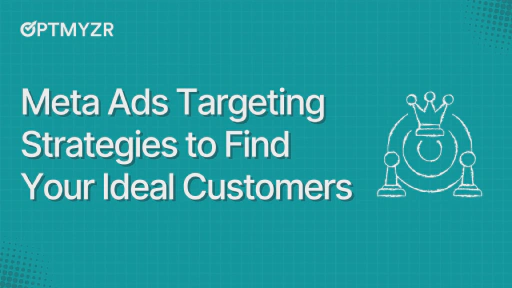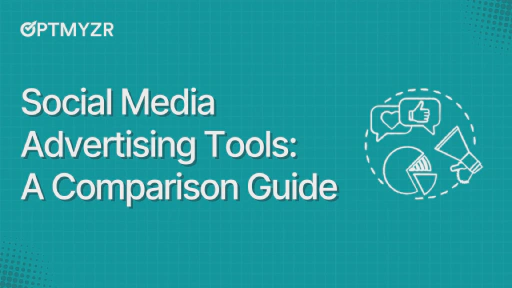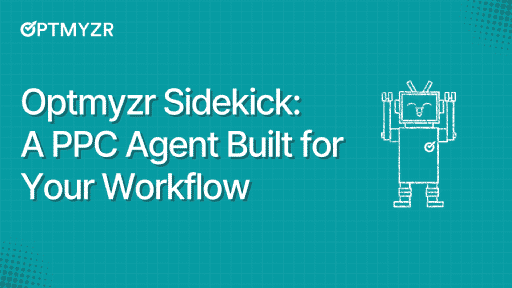Many B2B marketers are wasting thousands on LinkedIn ads because they’re using them like Google Ads. LinkedIn isn’t a search platform where people hunt for solutions; it’s a relationship platform where professionals connect and engage.
Treat it like Google, and you’ll get expensive clicks with terrible conversion rates. But treat it right? That’s where the magic happens.
AJ Wilcox proved this with a $90,000 test across multiple accounts. While most marketers pushed “Book a Demo” buttons at cold prospects, AJ’s three-stage approach made prospects 25X more likely to convert. (more on this later)
AJ Wilcox, founder of B2Linked.com and the #2 most influential person in PPC, has cracked the LinkedIn advertising code. His agency exclusively focuses on LinkedIn ads, delivering 5X higher conversion rates and dramatically lower costs for clients.
In this guide, you’ll learn his three-stage funnel system, cost-cutting bidding techniques, and why thought leader ads outperform company posts by 10X.
Proven tips for better B2B LinkedIn ads performance
LinkedIn and Google aren’t competitors; they’re complementary forces in your B2B marketing arsenal. While Google captures bottom-funnel intent, LinkedIn excels at building top-of-mind awareness and nurturing prospects who don’t even know they need your solution yet.
AJ emphasizes this synergy: “I look at something like social, especially LinkedIn, where we can be so specific about who is seeing these ads and we can get in front of them and build this top of mind awareness.” The key is understanding how to use LinkedIn’s unique strengths while integrating it with your broader marketing strategy.
Use image ads to stay fresh with cold audiences
Single-image ads remain the workhorse of successful LinkedIn campaigns. They’re highly effective, easy to create, and perfect for testing different messages with cold audiences.
“Single image sponsored content tends to be pretty high performing, and it’s also the easiest to create. I would say probably 80 percent of the media that our clients run is this single image.” - AJ Wilcox
The MiQ ad here is a perfect example of why single-image ads work so well on LinkedIn. It’s bold, clear, and built around one strong stat (39%), which immediately grabs attention in the feed.
The refresh strategy that works: Update your image ads every two weeks to prevent ad fatigue. You don’t need complete overhauls; small visual tweaks keep your content feeling fresh as users scroll through their feeds.
Best practices:
- Test different headlines with the same image
- Vary your value propositions while maintaining visual consistency
- Use high-quality, professional imagery that reflects your brand
- Consider A/B testing single images against short video content for maximum impact
Consider running Thought Leadership Ads
LinkedIn’s Thought Leadership Ads (TLA) aren’t just another ad format; they’re some of the highest-performing ads on the platform.
“LinkedIn have launched thought leader ads and these are by far the highest performing ad on LinkedIn. And the reason why is because this is we are now able to promote an individual’s post rather than a company’s post.” - AJ Wilcox
The example below from Justin Rowe (Founder of Impactable) shows this in action. Instead of hiding behind a company logo, Justin speaks directly to his audience with insights from running 500+ LinkedIn ad audits.
The creative features his face prominently, paired with a bold, scroll-stopping headline. It feels personal, credible, and instantly trustworthy.
Adding to this, AJ’s team also sees engagement rates that are 5-10 times higher compared to traditional company-sponsored content, with significantly lower costs per click.
“When you post something from your personal profile and when you post something from your company profile on LinkedIn, you’ll probably notice that your personal profile gets 10 times or more the engagement. So we know people on LinkedIn like to interact with people, not with companies.” - AJ Wilcox
Why they work: People connect with faces, not logos. When users scroll LinkedIn, they naturally stop for human connections over corporate branding.
Content strategies that perform:
- Personal stories and insights that showcase expertise
- Downloadable guides providing immediate value
- Short videos addressing industry challenges
- Behind-the-scenes content that humanizes your brand
- Industry commentary and opinion pieces
Match your content and call to action to audience temperature
The biggest mistake B2B marketers make is treating all LinkedIn audiences the same. Your messaging must align with how familiar prospects are with your brand.
“I wouldn’t send to cold traffic that I know didn’t know anything about me. I wouldn’t give a hard pitch. I wouldn’t say, ‘Hey, here’s what we do. Get a demo.’ It would be more of like a, let me introduce the brand to you. Let me give you free value.” - AJ Wilcox
Here’s how it should be:
💡Conversion Optimization Tip: LinkedIn's native lead generation forms deliver incredible conversion rates because they auto-fill prospect information, removing friction from the conversion process. |
Run separate retargeting campaigns for warm audiences
Segment your audiences based on their engagement level and create tailored campaigns for each group. This ensures warm prospects see content that resonates with their specific stage in the buyer’s journey.
For hot audiences (those already familiar with and trusting your brand), direct CTAs work well. Remember, only about 5% of your audience is typically ready to make a purchasing decision at any given time; segment accordingly.
Prevent saturation with a smart campaign structure
LinkedIn users can quickly become oversaturated with your content if you’re not strategic about frequency. AJ offers a crucial insight:
“If your campaign contains two or fewer ads, LinkedIn will only show each ad once every 24 hours per user. This ensures your content isn’t overwhelming and remains fresh.” - AJ Wilcox
Avoid these saturation mistakes:
- Don’t overload creatives: Too many ads in one campaign means users might see your content seven times in 48 hours
- Keep messages varied: Stick with fewer ads per campaign, but diversify your messaging
- Monitor engagement: Watch for declining performance that signals ad fatigue
The sweet spot: 2 ads per campaign maximum, with varied messaging that gently reminds your audience of your brand without overwhelming them.
💡Optmyzr Tip: Set up budget pacing alerts in Optmyzr for Social to get notified when your LinkedIn campaigns are under- or overspending against your monthly targets. Create metric alerts for CPC spikes or performance drops across portfolio, account, or campaign levels. |
Use smart bid management to cut costs dramatically
Most marketers unknowingly choose LinkedIn’s most expensive bidding option because it’s the default. Here’s what AJ discovered:
“The default bidding method that LinkedIn gives you in a campaign is called maximum delivery. This is the most expensive way to pay for your traffic on LinkedIn. There are very few situations where this is actually in your favor.
And LinkedIn takes it a step further by hiding the cheapest option. The cheapest option is called max bid, max CPC bid, and you actually have to click a button that says, ‘Show me more options before that one option appears.’” - AJ Wilcox
AJ had a campaign where LinkedIn suggested $16-66 per click. He bid $7 and spent his entire budget. Following LinkedIn’s recommendation would have delivered only one-seventh the traffic for the same spend.
AJ’s proven bidding strategy:
💡Optmyzr Tip: Stop manually checking if your campaigns are overspending. The Rule Engine in Optmyzr for Social lets you build automated rules that pause campaigns when they exceed budget limits, send alerts when CPCs spike above your thresholds, and create performance reports automatically. |
Stand out in the AI content era
With AI-generated content flooding LinkedIn, authentic human content has never been more valuable.
“When I see a lot of AI-written content, posts, comments, I can spot them pretty easily. Those who are using AI to post, I go, I’m not going to engage with your content because that’s not you, and I could just go ask ChatGPT.
So, I think it’s a huge opportunity for good marketers who are willing to go out and write things specifically that AI would not write.” - AJ Wilcox
Why this creates opportunity:
- AI content is becoming easily recognizable and less engaging
- Users crave genuine insights over generic outputs
- Your unique voice becomes a competitive advantage
- Authentic content commands premium attention and engagement
How to leverage this trend:
- Write from personal experience with specific examples
- Share nuanced opinions (AI tends to be generic and safe)
- Include behind-the-scenes insights about what worked and what didn’t
- Maintain your authentic voice even when using AI as a research tool
Google vs. LinkedIn: Why marketers need both platforms
Google’s search algorithm prioritizes matching ads with users who have shown clear intent through their search queries. As AJ explains: “I love Google Ads for the reason that it’s very simple and the traffic that comes is very bottom of funnel. They’re showing intent by typing the keyword that you’re bidding on, and then you show them an ad. That’s what they’re looking for, and then they convert.”
LinkedIn’s algorithm works differently, revolving around professional connections rather than search intent. “LinkedIn definitely tries to feed you content that it thinks you’re going to find most interesting.
A lot of the signals that it looks for are if you’ve interacted with a person or a company’s post before, or if you’ve chatted with that person through DMs on the backend,” AJ notes. However, compared to Instagram or Facebook, LinkedIn’s algorithm isn’t as refined in personalizing ads based on interests and behavior.
Instead, it relies more on the network’s professional structure and user interactions.
ASPECT | ||
Primary Focus | Intent-based search results from keywords. | Professional connections and network interactions. |
Targeting Strategy | Keywords, demographics, and bidding strategies. | Professional connections, posts, and DMs. |
Ad Personalization | Advanced, shows highly relevant ads based on search history. | Limited, prioritizes professional engagement. |
Top-of-Mind Awareness | Lower, emphasizes immediate conversions. | High, great for nurturing long-term relationships. |
Organic vs. Paid Reach | More organic results, competitive paid search. | Organic reach shrinking, prioritizing paid ads. |
Content Creation | Requires optimized content for direct search intent. | Opportunity for thought leadership with less competition. |
Strengths | Captures immediate intent and conversions. | Builds trust, nurtures professional relationships. |
LinkedIn offers a more personal approach through professional networks, while Google capitalizes on immediate search intent. Understanding these differences helps you tailor your strategies effectively to each platform, ensuring your brand’s visibility and trustworthiness where it matters most.
Search ads as a complement to LinkedIn
Combining LinkedIn ads with search ads on platforms like Google or Microsoft can create a powerful lead generation strategy. Here are a few ways these platforms can complement each other to maximize impact:
Top vs. Bottom of the Funnel: LinkedIn excels at engaging potential customers in the top and middle of the funnel, introducing your brand and generating interest. In contrast, Google and Microsoft dominate the bottom of the funnel, capturing high-intent searches that lead to conversions.
“I think search and social actually work so well together. I look at something like social, especially LinkedIn, where we can be so specific about who is seeing these ads and we can get in front of them and build this top of mind awareness.” - AJ Wilcox
Targeted Campaigns: Develop LinkedIn campaigns specifically designed to reach your ideal customer profile (ICP). Once these leads visit your website or landing pages, use Google and Microsoft ads to retarget them, keeping your brand top of mind across various networks.
“What I would suggest is have campaigns targeting your exact ideal customer profile. Reach them on LinkedIn and send that traffic to your website. With Google and Microsoft, you can retarget all of the traffic that lands on those pages.” - AJ Wilcox
Overcoming Platform Weaknesses: LinkedIn’s biggest limitation is user activity—most users log in only occasionally, making consistent engagement difficult. To address this, use Google and Microsoft search and display ads to remarket to your LinkedIn traffic across the web, ensuring multiple daily engagements.
“The biggest weakness with LinkedIn is that people don’t show up very often. You can be present every time they log in, but it’s hard to stay top of mind. Google and Microsoft remarketing campaigns allow you to stay top of mind, especially if it’s display network, like multiple times per day, all over the web.” - AJ Wilcox
Use First-Party Data: Visitors landing on your website from LinkedIn become first-party data you can use across multiple advertising networks. This integration ensures seamless engagement wherever prospects go.
“Let the platforms work together, retarget each other’s traffic to be ever-present wherever someone is.” - AJ Wilcox
Using a cross-channel advertising approach ensures a holistic marketing strategy that leverages each platform’s strengths, driving engagement at every stage of the customer journey.
💡Optmyzr Tip: Instead of jumping between LinkedIn and Meta tabs, create portfolios in Optmyzr for Social to group all your accounts by client, platform, or budget. Get a unified dashboard showing performance across all platforms in one view. |
Also Read: How to Manage Meta and LinkedIn Ads Together Without Losing Your Mind
Using LinkedIn data for Microsoft search campaigns
LinkedIn’s acquisition by Microsoft brought exciting possibilities for combining LinkedIn’s rich data with Microsoft’s advertising platforms. Although this integration isn’t fully realized yet, AJ explains how businesses can still benefit from this powerful pairing.
LinkedIn Data in Microsoft Search: MS Ads now includes LinkedIn targeting features such as company name, job function, and industry. Recent updates suggest job title targeting may also be available, enhancing precise targeting with potentially lower costs per click.
“Last time I checked, we could target by company name, job function, and company industry. Recently, I’ve heard that job title targeting might be available too, which would be a significant addition.” - AJ Wilcox
Enhanced Industry Data: LinkedIn used Microsoft’s more detailed industry classifications to expand its own categories from around 34 to over 300, enabling marketers to refine their targeting to specific subcategories.
“LinkedIn didn’t do nearly as much. They took Microsoft’s understanding of industries, which was much more granular. LinkedIn used to have about 34 industries and now offers over 300.” - AJ Wilcox
Search Insights for Interest Targeting: For Bing users, Microsoft may share their keyword history or search behavior with LinkedIn, allowing advertisers to layer relevant interests onto their audience targeting. While this dataset is relatively small due to limited Bing usage, it provides valuable insights that enhance campaign precision.
“If you are a Bing search user, Microsoft will pass your keyword history to LinkedIn, which LinkedIn uses to decide your interests.” - AJ Wilcox
Benefits Over Other Platforms: Combining LinkedIn’s professional network with Microsoft’s search capabilities offers unique advantages over other advertising platforms. This integration allows marketers to reach highly specific professional audiences across networks and maintain consistent messaging throughout.
Strategic Opportunities: Use LinkedIn data in MS Ads to complement your LinkedIn campaigns.
Target similar audiences on Microsoft search and display networks to capture cheaper clicks and expand your brand’s reach.
“I love that LinkedIn took Microsoft’s more detailed industry classifications to refine its own categories.” - AJ Wilcox
Although the integration isn’t perfect, using LinkedIn’s professional targeting within Microsoft Ads provides marketers with a strategic edge that can help maximize the impact of their campaigns across both platforms.
AJ’s 3-stage funnel strategy that boosted conversion rates 5X
AJ Wilcox changed his approach to LinkedIn ads by moving away from the traditional one-step conversion approach that most B2B marketers use. After extensive testing with $90,000 in ad spend across multiple accounts, his team discovered a three-stage funnel that dramatically outperformed direct conversion campaigns.
The proven results:
“We’ve gone all in on a three-stage funnel. What we found from two recent tests we ran, there were like, $90,000 in ad spend across two different accounts. We found we created a stage one, stage two, and stage three funnel, where to get into stage three, you had to have interacted with both a stage one ad and a stage two ad.
And what we found is showing the same kind of conversion call to action, stage three had a five times higher conversion rate than stage two and stage two had a five times higher conversion rate than stage one. And it persisted across multiple accounts.” - AJ Wilcox
Think about that for a second. Stage 3 converted 5X better than Stage 2, and Stage 2 converted 5X better than Stage 1. That means someone who went through all three stages was 25X more likely to convert than a cold prospect seeing your ad for the first time.
How the three stages work
Stage 1: Stop the scroll: Don’t pitch anything. Just provide genuine value that makes people think, “Huh, that’s interesting. I didn’t know that.” You’re not asking for their email or trying to sell them anything. You’re just being helpful.
Stage 2: Build the relationship: Now you can go deeper. Share insights, case studies, or educational content that positions you as someone worth listening to. Again, no hard sell – just more value.
Stage 3: Make the ask: Only now, after someone has engaged with your first two pieces of content, do you present your offer. These people already know you, they’ve seen your expertise, and they trust you enough to have engaged twice.
Why this works so well
This approach mirrors real B2B buying behavior, where prospects need multiple touchpoints before they’re ready to convert. Instead of pushing cold leads with immediate conversion asks, you’re building trust step by step. Each interaction warms up the audience, making them far more likely to convert when you finally present your offer.
The key insight is that B2B buyers, especially on LinkedIn, need to be educated and nurtured before they’re ready to take action. Requiring engagement with multiple stages ensures you’re essentially qualifying your prospects while building the know-like-trust factor that’s crucial for B2B sales.
💡 Bonus tip: The “video-first” funnel builder
The Problem: Building Stage 1 audiences can be expensive with traditional ads
AJ’s Secret: Use 30-40 second talking-head videos shot on your phone
Quick Action Plan:
- Record monthly: Address one common customer question per video
- Keep it simple: Phone and natural lighting are enough
- Target the watchers: 50%+ video completion = Stage 2 audience
- Scale smart - One video can feed your funnel for weeks
Your Stage 1 audience becomes massive and engaged in a budget, giving your 3-stage funnel the fuel it needs to deliver those 25X conversion improvements.
How to win with LinkedIn video ads
You don’t need elaborate studios or professional crews to create effective LinkedIn video ads. Grab your phone and record videos in a natural, organic style. AJ emphasizes the value of this approach:
“What I’ve noticed is that AI is really bad at currently at putting emotion into it. So what I prefer to do is actually just grab my phone and speak to it just very naturally, very organically. And we’ve found in a lot of cases that’s free to do. And it outperforms the stuff that was done in a studio with professional teams and crews.” - AJ Wilcox
Share Personal and Valuable Insights: Focus on sharing insights that make your audience care about your brand. When you discuss relatable challenges or valuable tips, you build trust and interest. This makes viewers more receptive to your message and encourages them to learn more about your company.
Optimize for Engagement: Short video bites have a greater impact than longer content. AJ explains: “The cost per getting someone to watch, you know, half or more of that video is usually about a quarter of what you’d pay to get someone to land on a landing page of some kind.”
Find the Right Cadence: Creating video ads once a month provides enough time for each campaign to generate results while keeping your content pipeline active. Test various video topics, and don’t worry about repeating ideas that seem obvious to you. What may feel repetitive to you could be new and valuable to your audience.
How AJ creates his video content
Creating high-quality video content does not require a studio or expensive equipment. AJ shares a simple yet effective approach to making engaging videos that resonate with audiences:
“I have a tripod, a wireless mic, and that’s it. I take it out into my front yard or a park or even here in my office and just record based off of the kind of content I create.” - AJ Wilcox
By simplifying production and focusing on relevant, actionable topics, you can create effective video content that resonates with your audience, helping build your brand’s thought leadership and trust.
Here are a few more tips from AJ’s video creation process:
- Outline or Script: AJ says that generally works from an outline of bullet points or a full script to maintain focus while allowing for some improvisation. This process will ensure that you cover key points while also leaving room for authenticity.
- Address Relevant Topics: AJ finds topics from frequently asked questions on LinkedIn posts and his podcast. For instance, if several people ask about manual bidding, he makes a video addressing the topic, even if it feels like familiar territory. Look for relevant and fresh topics to talk about.
- Tailor to Funnel Stages: Create different videos for different stages of the funnel. Top-of-the-funnel videos provide informative content to attract and engage new audiences, while bottom-of-the-funnel videos focus on offers like a free audit to warm prospects already familiar with the brand.
- Monthly Cadence: Record video content once a month. Frequency will help you stay consistent while keeping the workload manageable
Automate campaign tasks to make time for creative growth
You can watch the full PPC Town Hall episodes with AJ Wilcox here:
AJ’s strategies are proven to work, but implementing them manually across multiple campaigns is time-consuming. The future of LinkedIn advertising lies in automating routine tasks so you can focus on what matters most: creative strategy and relationship building.
Here’s how Optmyzr for Social helps you implement AJ’s proven strategies more efficiently (some of these we have already discussed above):
→ Never Miss Performance Changes: Set up automatic alerts for CPC spikes, budget overruns, or engagement drops. Get notified via email, Slack, or Teams when your three-stage funnel campaigns need attention—no more manual monitoring.
→ Manage Your Cross-Platform Strategy: Create portfolios to group LinkedIn, Meta, and other accounts by client or campaign type. Implement AJ’s cross-platform retargeting strategy without juggling multiple browser tabs.
→ Get Real-Time Performance Insights: Connect directly to LinkedIn’s API for instant reporting with near 100% reliability. Track your funnel progression and thought leader ad performance in real-time instead of waiting for delayed platform reports.
→ Automate Budget Protection: Use the Rule Engine to automatically pause campaigns that exceed your bid thresholds or daily budgets. Implement AJ’s smart bidding strategies with built-in safeguards.
→ Analyze What’s Actually Working: Use the Ad Analyzer tool to identify which creative formats, audiences, and messages drive the best results across your entire LinkedIn strategy.
Curious to test these out?
Book a fully functional 14-day free trial and see how Optmyzr for social can help! (no credit card required).









